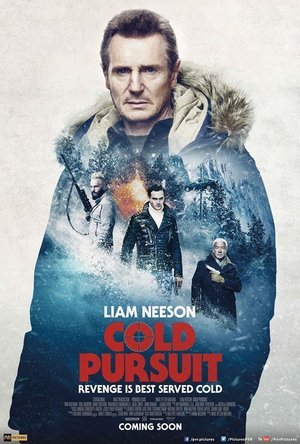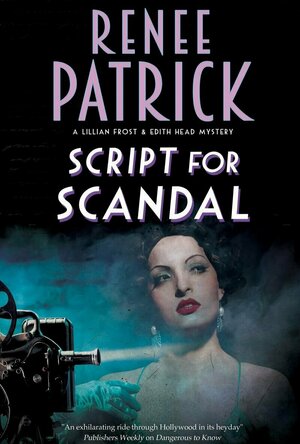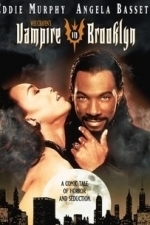Search
Debbiereadsbook (1579 KP) rated Inspired By Murder in Books
Sep 18, 2018
a good book, just not one for me.
Independent reviewer for Archaeolibrarian, I was gifted my coy of this book.
Jumping straight in here, cos this may not make sense but I'll do my best!
Ordinarily, I LOVE getting into the minds of the bad guys. LOVE it, because it happens so rarely. I love being able to follow their twisted convoluted thinking (sometimes, anyway!) and actually being able to follow just WHY they do their thing.
Ordinarily.
But here? Not so much. I don't know if it is the subject matter, or just the way the author tells her tales (first one I've read of this author) or maybe just Eric himself. I dunno. I just didn't (and this is going to sound like I need some serious help!) connect very well with Eric!
He is an aspiring author, but needs the perfect crime. So, why not commit one to get it right?? So he does! He has it all planned out, and carries it off, and then the police start asking questions about his secretary? He is a little thrown off but pulls himself together enough to get justice for her, even if it isn't correct.
Stephenson, the detective in charge of solving the murders of a New York Times best selling romance author and his wife, knows Eric did it, he just has to give him enough rope.
But Eric has some tricks up his sleeve, and some secrets in his closet that throw the whole thing wide open, world wide open! And I DID like that! The man was three steps ahead of Stephenson every step of the way, and Cole pulls a blinder of a plot twist I did not see coming!
I did like the way the story unfolds, the way Eric unravels (sorta) I just don't think THIS particular book did very much for me.
So
3 stars
**same worded review will appear elsewhere**
Jumping straight in here, cos this may not make sense but I'll do my best!
Ordinarily, I LOVE getting into the minds of the bad guys. LOVE it, because it happens so rarely. I love being able to follow their twisted convoluted thinking (sometimes, anyway!) and actually being able to follow just WHY they do their thing.
Ordinarily.
But here? Not so much. I don't know if it is the subject matter, or just the way the author tells her tales (first one I've read of this author) or maybe just Eric himself. I dunno. I just didn't (and this is going to sound like I need some serious help!) connect very well with Eric!
He is an aspiring author, but needs the perfect crime. So, why not commit one to get it right?? So he does! He has it all planned out, and carries it off, and then the police start asking questions about his secretary? He is a little thrown off but pulls himself together enough to get justice for her, even if it isn't correct.
Stephenson, the detective in charge of solving the murders of a New York Times best selling romance author and his wife, knows Eric did it, he just has to give him enough rope.
But Eric has some tricks up his sleeve, and some secrets in his closet that throw the whole thing wide open, world wide open! And I DID like that! The man was three steps ahead of Stephenson every step of the way, and Cole pulls a blinder of a plot twist I did not see coming!
I did like the way the story unfolds, the way Eric unravels (sorta) I just don't think THIS particular book did very much for me.
So
3 stars
**same worded review will appear elsewhere**
Gareth von Kallenbach (980 KP) rated Cold Pursuit (2019) in Movies
Jun 19, 2019
Nels Coxman (Liam Neeson) is a simple man who spends his days clearing the roads in a remote Colorado Ski Town and spends his days with his wife and his son. Nels is so unassuming that when he is awarded Citizen of the Year he states that there are others far more worthy and fusses over getting dressed up to accept the award and make a speech.
When his son is found dead of a Heroin overdose; Nels is not willing to accept that his son was a user even though this puts tremendous strain on his marriage and has taken Nels to consider suicide. At his worst moment he learns that his son’ co-worker was involved with some shady dealing and that his son was likely collateral damage from the criminal elements involved.
With a new found sense of purpose: Nels embarks on a quest to find the truth and avenge his son’s death no matter the consequences.
One would think that “Cold Pursuit” is a standard revenge film but it unexpectedly changes direction shortly after Nels starts exacting his revenge. The film transforms into a Dark Comedy of sorts as characters get a Title Screen when they are killed many of which have a morbid humor to them. The film even takes the bold step of moving away from Neeson for a good third of the film and putting the emphasis on other characters from rival crime organizations to the Sherriff and his eager Detective (Emmy Rossum).
As such the film is not what you expect as although there is plenty of action at times; it is a Dark Comedy with dramatic elements. It is more in line of what you might expect at a Film Festival from an Indie studio versus a major studio release.
As such fans of Neeson may be disappointed in seeing a departure from the type of films they have come to expect from him in recent years while others may embrace the quirky nature of the film.
http://sknr.net/2019/01/30/cold-pursuit/
When his son is found dead of a Heroin overdose; Nels is not willing to accept that his son was a user even though this puts tremendous strain on his marriage and has taken Nels to consider suicide. At his worst moment he learns that his son’ co-worker was involved with some shady dealing and that his son was likely collateral damage from the criminal elements involved.
With a new found sense of purpose: Nels embarks on a quest to find the truth and avenge his son’s death no matter the consequences.
One would think that “Cold Pursuit” is a standard revenge film but it unexpectedly changes direction shortly after Nels starts exacting his revenge. The film transforms into a Dark Comedy of sorts as characters get a Title Screen when they are killed many of which have a morbid humor to them. The film even takes the bold step of moving away from Neeson for a good third of the film and putting the emphasis on other characters from rival crime organizations to the Sherriff and his eager Detective (Emmy Rossum).
As such the film is not what you expect as although there is plenty of action at times; it is a Dark Comedy with dramatic elements. It is more in line of what you might expect at a Film Festival from an Indie studio versus a major studio release.
As such fans of Neeson may be disappointed in seeing a departure from the type of films they have come to expect from him in recent years while others may embrace the quirky nature of the film.
http://sknr.net/2019/01/30/cold-pursuit/
Nicely written (2 more)
Adorable lead character
Lots of wit and humour
A Delight To Read!
Wow, what a fantastic beginning to a new series! I thoroughly enjoyed reading this book from the very first page.
Shattered is the first novel of the "Drew Patrick Private Investigator" series, with PI Drew Patrick as the lead character.
Shattered begins with Cynthia and Jeffrey Holland, who are concerned for their daughter, Ashley, who is missing. Ashley, although prone to jetting off for long weekends and extended shopping trips, is very much a free spirit and has never been incommunicado for more than four days. When Ashley and another young woman, Hannah Parks, are found murdered, Drew realises he is facing two murder investigations. He is now on the trail of a contract killer and looking for the person who hired the assassin to carry out the murders.
When a third woman, Victoria Clark, vanishes from a luxury yacht and her body is washed up on shore, Drew needs to look deeper into the links between the victims. However, he finds himself in deep water with a renowned Boston crime boss.
I loved the portrayal of the relationship between Drew and his significant other, girlfriend Jessica Casey. They are "romantically involved" and have a relaxed, easy-going attitude towards one another. Drew is very thoughtful and caring of all of the important things and people in his life. He also has a good rapport with his working acquaintances. Jessica has beauty and brains, works for a Detective Agency and is very helpful to Drew as a PI.
Drew has some hilarious moments that make him adorable. I thought Shattered, though short, was very nicely written and I found it a delight to read. Though the ending was not a surprise, I loved the way the book was concluded.
Reading Shattered has inspired me to read other books by Jason Richards and I can't wait for the next one in this series!
Thank you to LibraryThing and the author for an ARC of this book.
Shattered is the first novel of the "Drew Patrick Private Investigator" series, with PI Drew Patrick as the lead character.
Shattered begins with Cynthia and Jeffrey Holland, who are concerned for their daughter, Ashley, who is missing. Ashley, although prone to jetting off for long weekends and extended shopping trips, is very much a free spirit and has never been incommunicado for more than four days. When Ashley and another young woman, Hannah Parks, are found murdered, Drew realises he is facing two murder investigations. He is now on the trail of a contract killer and looking for the person who hired the assassin to carry out the murders.
When a third woman, Victoria Clark, vanishes from a luxury yacht and her body is washed up on shore, Drew needs to look deeper into the links between the victims. However, he finds himself in deep water with a renowned Boston crime boss.
I loved the portrayal of the relationship between Drew and his significant other, girlfriend Jessica Casey. They are "romantically involved" and have a relaxed, easy-going attitude towards one another. Drew is very thoughtful and caring of all of the important things and people in his life. He also has a good rapport with his working acquaintances. Jessica has beauty and brains, works for a Detective Agency and is very helpful to Drew as a PI.
Drew has some hilarious moments that make him adorable. I thought Shattered, though short, was very nicely written and I found it a delight to read. Though the ending was not a surprise, I loved the way the book was concluded.
Reading Shattered has inspired me to read other books by Jason Richards and I can't wait for the next one in this series!
Thank you to LibraryThing and the author for an ARC of this book.
Mark @ Carstairs Considers (2450 KP) rated Script for Scandal in Books
Jan 8, 2020
Will a Movie Script Revive a Scandal?
In 1936, a bank robbery took place in Los Angeles. While the robbers were killed, the money was never found, and rumors have circulated that there was someone else involved. Most suspect that the someone else was LAPD Detective Gene Morrow, the boyfriend of Lillian Frost. While the rumors have mostly died down, they are about to come out again in 1939 thanks to a new movie being filmed at Paramount. Costume designer Edith Head has seen the script, and she gets a copy to her friend Lillian so she and Gene can be prepared. Lillian is more concerned than Gene and actively tries to find out who the writer is claiming is his source for this movie. She hasn’t been looking for too long before someone turns up dead. Can Lillian and Edith figure out what happened back then and how it is impacting what is happening today?
I was so happy when this series found a new home because I enjoyed the first two books so much. This book is just as strong. The authors mix real people with the fictional characters so expertly I am sure I missed some of the cameos. Yet everyone comes across as real. I did think the plot was wandering a bit early on, but everything became an important part of the story before it was over. Not that I was complaining since I was hooked for most of the book and couldn’t wait to see how it would all turn out. Both Edith and Lillian are instrumental to solving the crime in the end. Meanwhile, there is a delightful subplot involving Lillian’s boss preparing for a job as an extra that leads to a hilarious scene. This book brings old Hollywood to life in every detail, and I enjoyed every minute spent in that world. This book will delight Edith and Lillian’s fans and win them new ones.
I was so happy when this series found a new home because I enjoyed the first two books so much. This book is just as strong. The authors mix real people with the fictional characters so expertly I am sure I missed some of the cameos. Yet everyone comes across as real. I did think the plot was wandering a bit early on, but everything became an important part of the story before it was over. Not that I was complaining since I was hooked for most of the book and couldn’t wait to see how it would all turn out. Both Edith and Lillian are instrumental to solving the crime in the end. Meanwhile, there is a delightful subplot involving Lillian’s boss preparing for a job as an extra that leads to a hilarious scene. This book brings old Hollywood to life in every detail, and I enjoyed every minute spent in that world. This book will delight Edith and Lillian’s fans and win them new ones.
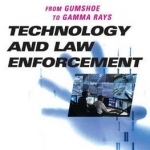
Technology and Law Enforcement: From Gumshoe to Gamma Rays
Book
Although for much of the mid-20th century police departments across the U.S. had been reluctant to...
Matthew Krueger (10051 KP) rated Vampire in Brooklyn (1995) in Movies
Sep 18, 2020
Brooklyn's Own Vampire
Vampire in Brooklyn- is a entertaining movie. It has horror, comedy and eddie Murphy as the bad guy.
The plot: In the wake of her mother's death in a mental institution, detective Rita Veder (Angela Bassett) is assigned to a baffling serial murder case. After examining the crime scene -- a corpse-filled ship found adrift at sea -- Rita meets Maximilian (Eddie Murphy), a smooth-talking Caribbean playboy determined to romance her. When Rita begins suffering from crippling hallucinations, she calls upon Dr. Zeko (Zakes Mokae), an occultist who suspects a vampire is on the loose.
According to Charlie Murphy, the movie was originally going to be a straight horror film with no laughs but Wes Craven brought a different focus to it. He also said: "Maximilian wasn't going to have any redeeming qualities. But Wes taught us that we must get the audience to care about our characters. And even if they didn't know any vampires personally, they would at least have to identify with the type of person he was.
About the movie, Eddie Murphy said: "I've always wanted to do something where I was the villain in the movie. I love horror pictures and I was a big fan of Wes Craven. This movie started out as something small, this was a movie my company was just going to produce and the screenplay came together so well that I thought it will be a fun role to play. Because I got to do something kind of scary and had a safety net because the vampire can turn into other peoples. I get to be funny when I'm the preacher and I get to be funny when I'm the Italian guy. And the vampire is pretty straight and I got all these funny stuff happening around me. I felt it was a unique piece to do."
Although contemporary reviews were negative, Vampire In Brooklyn has since become a cult classic.
Like i said its a good comedy horror film.
The plot: In the wake of her mother's death in a mental institution, detective Rita Veder (Angela Bassett) is assigned to a baffling serial murder case. After examining the crime scene -- a corpse-filled ship found adrift at sea -- Rita meets Maximilian (Eddie Murphy), a smooth-talking Caribbean playboy determined to romance her. When Rita begins suffering from crippling hallucinations, she calls upon Dr. Zeko (Zakes Mokae), an occultist who suspects a vampire is on the loose.
According to Charlie Murphy, the movie was originally going to be a straight horror film with no laughs but Wes Craven brought a different focus to it. He also said: "Maximilian wasn't going to have any redeeming qualities. But Wes taught us that we must get the audience to care about our characters. And even if they didn't know any vampires personally, they would at least have to identify with the type of person he was.
About the movie, Eddie Murphy said: "I've always wanted to do something where I was the villain in the movie. I love horror pictures and I was a big fan of Wes Craven. This movie started out as something small, this was a movie my company was just going to produce and the screenplay came together so well that I thought it will be a fun role to play. Because I got to do something kind of scary and had a safety net because the vampire can turn into other peoples. I get to be funny when I'm the preacher and I get to be funny when I'm the Italian guy. And the vampire is pretty straight and I got all these funny stuff happening around me. I felt it was a unique piece to do."
Although contemporary reviews were negative, Vampire In Brooklyn has since become a cult classic.
Like i said its a good comedy horror film.
Lindsay (1779 KP) rated The Black Midnight (True Crime #7) in Books
Aug 4, 2020
If you are a history lover and enjoy England, you will enjoy this book. Well, you will get a bit of a tour of London. Though we start in Austin, Texas. We are introduced to every strong Pinkerton detective and her partner. We seem to have unsolved murders in Texas. But our detectives seem to be quite busy otherwise while chasing down a killer.
Will Annie and her partner Isaiah solve the murders in Austin and London? Will they find the killer that is killing women in their beds in Austin and the connection with the killing in London? The queen seems to want her great-granddaughter to look into them with her friend from Texas.
The pages will make you want to read until the last page. You will be on your toes and turning or sliding your pages up reading until the end. Is the killer Jack the Ripper, or is it someone else? You will be trying to guess and figure out along with the Pinkerton detectives in their investigations.
I felt like I was investigating along with them trying to find the killer of the mysterious deaths. You do get pulled into experience the London along the way. Who or What is the Black Midnight? Is the Midnight Assassin the same person as The Black Midnight or Jack the Ripper?
All fans of historical fiction and crime will love this book and the series. It had me wanting more. It is in does go into details about investigations but not a lot into the deaths of killings. This is good in that way. What does the Prince want with his daughter? Why is he trying to bring his daughter home? Who is Annie Walters? Will she give herself away? What up with Cameron Blake and his reporting. Some entertaining story plots are going on. We go on as adventure with this one.
Will Annie and her partner Isaiah solve the murders in Austin and London? Will they find the killer that is killing women in their beds in Austin and the connection with the killing in London? The queen seems to want her great-granddaughter to look into them with her friend from Texas.
The pages will make you want to read until the last page. You will be on your toes and turning or sliding your pages up reading until the end. Is the killer Jack the Ripper, or is it someone else? You will be trying to guess and figure out along with the Pinkerton detectives in their investigations.
I felt like I was investigating along with them trying to find the killer of the mysterious deaths. You do get pulled into experience the London along the way. Who or What is the Black Midnight? Is the Midnight Assassin the same person as The Black Midnight or Jack the Ripper?
All fans of historical fiction and crime will love this book and the series. It had me wanting more. It is in does go into details about investigations but not a lot into the deaths of killings. This is good in that way. What does the Prince want with his daughter? Why is he trying to bring his daughter home? Who is Annie Walters? Will she give herself away? What up with Cameron Blake and his reporting. Some entertaining story plots are going on. We go on as adventure with this one.
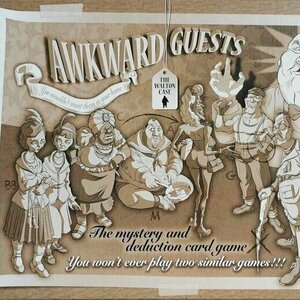
Awkward Guests
Tabletop Game
Awkward Guests / Incómodos Invitados is a one of a kind deduction game with infinite...
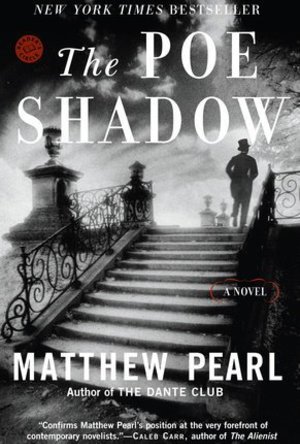
The Poe Shadow
Book
“I present to you . . . the truth about this man’s death and my life.” Baltimore, 1849. The...
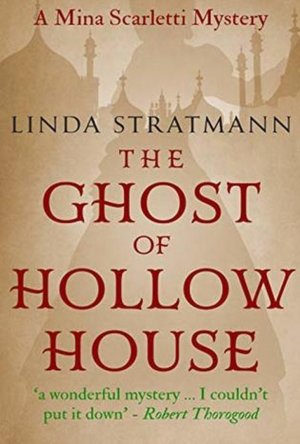
The Ghost of Hollow House
Book
Mina Scarletti returns in her most thrilling mystery yet! Perfect for fans of Sherlock Holmes,...
Ghosts Suspense Historical Fiction

